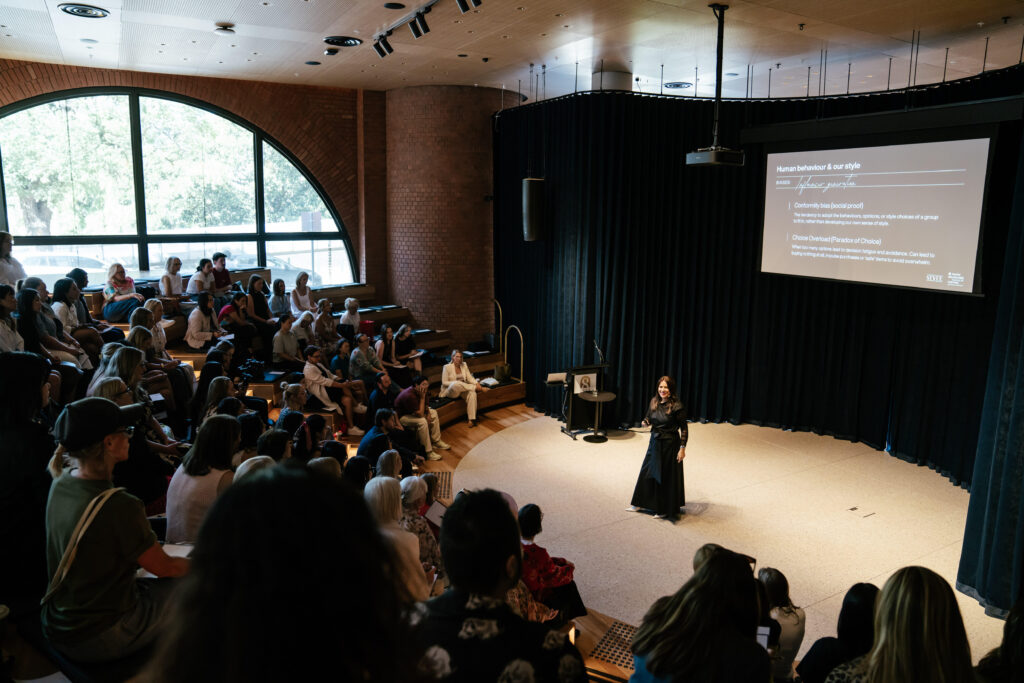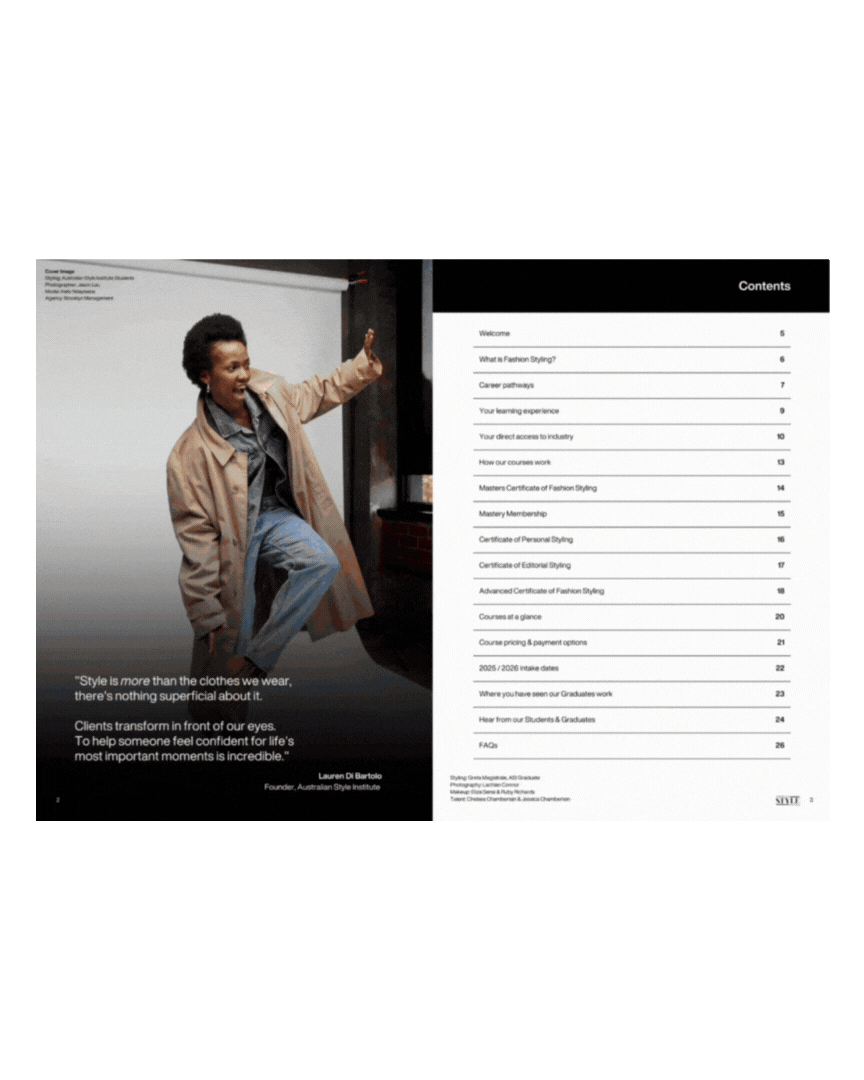Op shopping can often lead us to a treasure trove of vintage finds. 90’s style floral dresses, Levi 501’s in the perfect wash, and street style-esque blazers. The only downside of these thrifted finds is that sometimes they don’t fit us just as we visualised – waists gape and shoulder pads are more square than sleek. And without the option to ask for another size, how can we still get our vintage thrill without looking like a movie extra from the ’80s? The answer is upcycling!
What is Upcycling?
With a little creativity, upcycling is the process of tailoring, altering or mending your clothes to create a unique garment that is perfectly tailored to you, which also means less landfill and that’s a big enviro win! From simple to seamstress, there are ways to upcycle preloved for every level and I’m about to take you through some of my faves!
If you aren’t that confident with a needle and thread, there are even step-by-step tutorials on youtube to help you along the way. Or why not sweet-talk your parents or grandparents into helping you level up your skills.
How to Upcycle your Wardrobe
The Beginner
Never fear if you’re a beginner at sewing. All you need is a basic kit of thread, needles, pins, scissors and an unpick. These are also handy in your stylist kit. Simple upcycling tasks such as taking up hems and stitching on buttons only require a moment or two of your time, but can instantly transform any item and save it from a life in landfill.
Slash up your jeans or cut off the hem to add some edge, iron on some patches to spell out your feelings, sew some pom poms on an old knit for a preppy feel. The ideas are endless. Take inspiration from your favourite designers and add your own DIY twist.
There are also specialised sew courses where you can learn the basic skills such as The Gaye Abandon School of Sewing and Upcycling who runs classes each year. Before you know it, you will be making a #memade outfit!
The Confident Upycler
Feeling a little more confident with your sewing skills? Then let’s step it up a notch by altering the shape of the garments themselves.
I spoke to upcycling queen Stella from Gliese 504. Stella takes deadstock fabrics and garments that cannot be sold and reworks them into new creations. She and her seamstresses even teamed up with Nique to upcycle some of their unsold stock.
How to Alter a Blazer That is Too Big
From the queen herself, Stella gave me some tips on reworking those oversized blazers hidden in the men’s section.
“Locate the two darts at the front of your blazer and unpick them. Measure the width of your favourite belt and open a hole of the same length. Stitch the top and the bottom of the hole by hand to make sure it won’t unravel and then pop your belt in! It will have a clean and even look and all the fabric will gather at the back”
Tips for Altering Jeans
One of the biggest issues in our wardrobes is the annoying waist gap at that back of an otherwise perfect pair of jeans. As a woman with a small waist compared to my bottom, I run into this issue all too often. Adding a small dart to the waistband will help solve this common issue. If your sewing isn’t perfect, hide it with a belt.

The Advanced Dressmaker
When there are millions of videos on YouTube showing op shoppers cutting up their vintage finds and creating trend-driven new outfits with them, you know that sewing isn’t just for our grandparents anymore! As a Sustainable Stylist, it gives me such a thrill to see people reusing old resources to create something new.
The trend has even shown up on Tik Tok, with users taking oversized nightgowns and chopping them into Zara-esque co-ords, some even with matching scrunchies.
A simple way to dip your toe into the thrift flip movement is with this simple off the shoulder dress upcycled from a men’s shirt. Just check with your partner before chopping up all their shirts!
Before diving into your Aunt’s vintage stash, experiment with cutting up some old clothes to help build your garment construction knowledge. Jackets are often made of up to 23 individual pattern pieces that all slot carefully together; by understanding this, you can create better fitting garments that can last a lifetime. While taking a garment construction course can help us build that knowledge, it’s also worth experimenting with old garments. Cutting them up and piecing them back together in different ways will help expand your understanding of garment construction. After all, Jean-Paul Gaultier built an international fashion empire with no formal training.

The Seamstress
Remember when your Mum made all your clothing and you and your sisters had matching tracksuit sets? Or was that just me? Well, now the matching tracksuit is creeping back into style (thanks COVID). But instead of adding straight to cart, some crafty people are sewing up their own and teaching others to do the same. It’s the #memade movement where crafters are showcasing their creations on Instagram with step-by-step stories and tips on fabric choices, often featuring cute mini-me outfits too!
Instagrammers Cecile from @irenexnicole, Madeline from @theessentialsclub and Geneva of A Pair & A Spare fame (now Collective Gen) are showing their followers how to create lush cottage-core linen dresses, wardrobe basics such as stripe tees and even your own sofa cushions, all in the perfect Instagram grid. The endless search for that perfect dress is no longer in Vogue, now we just make it!
Sewing Idea for Beginners
Thinking of dusting off your sewing machine? Start off slow with something like a simple wrap dress before jumping into anything too complicated. Another perfect beginner project is making your own face masks – you could even match them to your new slip dress.

The Mending Marvel
“Visible mending is a quiet global protest movement happening at a grass-roots level, challenging the way we consume clothing. “We don’t need to throw our clothes away, and we’re wearing our mends as a badge of honour” – Jane Milburn, Textile Beat
Since fast-fashion is built on obsolescence, we often toss out our garments if they get a hole or the seams tear. Instead of sending your favourite top to landfill, fix it! Mending techniques such as patching a hole or sashiko are visual reminders that you care for your garments and a quiet rebel against the take, make, waste mindset of fast-fashion.
Tips for Mending Clothing
If you aren’t open to visible mending, there are many invisible ways to repair such as using matching threads or fabrics to cover the hole, felting in the same colour or following an existing pattern (add more dots to your dotty jumper!). But you could also follow in the steps of “Make do and Mend” icon, Vivian Westwood and make it as loud and colourful as you feel.
Melbourne Mending icon, Erin Lewis Fitzgerald recently released a book to help with all those tricky mending questions. Her online shop of the same name, Modern Mending, also sells everything a mender could need, from patch packs to mending mushrooms.
Even fashion brands are jumping on the upcycling trend. Celebrity favourite denim brand, RE/DONE, takes the jeans that nobody wants and upcycles them. By disassembling them and matching them back together, RE/DONE creates unique environmentally friendly pieces.
Tips for sustainable stylists
Next time you are scouring the racks for a vintage score, disregard the sizing and search all the sections. Seek out some holey jumpers. Get creative with your new finds and stamp your unique identity on them.
If you are with a client and their favourite knit is full of holes, suggest some visible mending instead of tossing it.
Small steps such as these go against the grain of traditional fast-fashion and are great ways to embrace slow-fashion.
Interested in learning more about becoming a Professional Stylist? Download your FREE Course Guide here.
–
By Jenna Flood
Jenna completed her stylist training with Australian Style Institute and specialises as a sustainable expert in Personal Styling. “ASI’s ongoing support has given me the confidence to grow my business and establish myself as a sustainable style expert. I have presented talks and workshops for various councils and businesses, consulted with both female and male clients, organised a runway for VAMFF, and been a guest speaker for ABC radio.






















